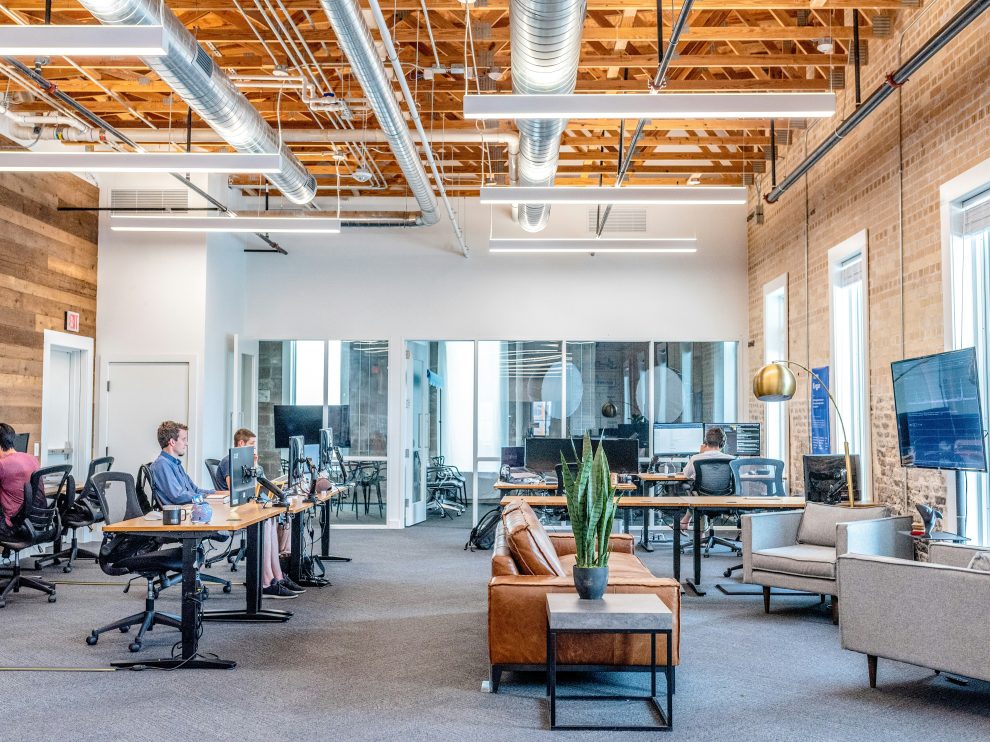In today’s evolving workplace, hybrid schedules and remote flexibility are here to stay. For commercial real estate investors, this shift brings both challenges and opportunities. Attracting and retaining high-quality tenants now requires more than just offering four walls and a lease. You must embrace innovative strategies that bring tenants back to the office, foster community and create vibrant, functional work environments.
Strategies to Enhance Tenant Appeal and Long-Term Value
From curb appeal to community-building amenities, these approaches can help you modernize office space and increase investment performance:
Start With Curb Appeal
Your building’s exterior is often the first, and sometimes only, impression on tenants. While cleanliness is essential, strategic enhancements send a clear message that your property is well-maintained and professionally managed. Examples of effective curb appeal upgrades include:
- Attractive, well-lit signage
- Resurfaced & clearly striped parking lot
- Fresh exterior paint
- Professionally maintained landscaping
- A welcoming, illuminated entrance.
Ensure Interiors Are Functional and Inviting
Indoor shared areas are just as important to potential tenants. Clean, well-kept lobbies and hallways reflect your commitment to the property. By promptly addressing maintenance issues, you can build trust with your tenants and foster a shared respect for the property. Adding tasteful furnishings and décor creates an inviting atmosphere, while indoor greenery can improve air quality and boost tenant well-being.
Embrace Flexible Offi ce Designs
As hybrid work arrangements remain popular, utilize this trend to stay ahead. Offer flexible lease terms, modular floor plans and shared common areas to meet evolving tenant needs. Spaces that support both quiet focus and team interaction add value to tenants who are embracing new work styles.
Offer Leasehold Improvements
Customizing your office space for tenant use isn’t just smart business; it may offer financial advantages. Leasehold improvements are alterations to customize leased spaces according to a tenant’s business needs. While these improvements primarily serve to modify or upgrade spaces for tenants, they also offer significant tax benefits. By retaining ownership of leasehold improvements, landlords can leverage depreciation benefits to reduce taxable income on an annual basis. These assets may also qualify for bonus depreciation, allowing landlords to accelerate the depreciation schedule and maximize tax savings.
Build a Strong Tenant Relationship
Tenants who feel valued are more likely to renew leases, refer others and take better care of their spaces. Create this connection by:
- Responding promptly to maintenance requests
- Encouraging regular check-ins
- Soliciting feedback.
Cultivate Community and Culture
Tenant satisfaction and retention are often linked to a sense of community. Hosting onsite events, workshops, seminars and networking sessions creates shared experiences that foster tenant engagement.
Consider digital or physical bulletin boards for tenant news and updates and celebrate cultural diversity with inclusive events.
Invest in Shared Amenities
Modern tenants expect more from their workplaces. Amenities such as gyms, cafes and lounges encourageemployees to stay onsite and collaborate. Resources like childcare centers, coffee shops and dining options can further set your property apart. Owners can enhance community engagement while supporting the local economy by off ering discounts to local businesses and organizations to operate these amenities.
Develop Co-working Spaces
Open floor plans, training rooms and collaborative zones are in demand, attracting established companies, startups and freelance workers. These spaces encourage networking, drive innovation and increase connection to the office.
Prioritize Sustainability
Green buildings resonate with today’s corporate social responsibility (CSR) values. Energy-efficient systems, recycling programs and green certifications show your commitment to sustainability. These practices attract environmentally conscious tenants, result in operational savings and potentially off er tax credits designed to incentivize energy-efficient upgrades.
These credits include the installation of renewable energy systems like solar panels, which off er upfront cost reductions through the Investment Tax Credit (ITC). This federal credit allows landlords to recoup a percentage of their installation costs, directly lowering federal income taxes and making renewable energy projects more financially feasible.
Strengthen Digital Presence
A professional online presence matters. Utilize professional photography, interactive floor plans and virtual tours to showcase your building’s value. Clear and engaging digital content builds credibility and extends your reach to more prospective tenants.
Promote Location and Accessibility
Location remains a top priority for tenants. Proximity to restaurants, retail, attractions and transit can enhance your property’s appeal. Amenities like onsite parking, bike storage and EV charging stations are attractive to potential tenants.
Closing the Deal
Commercial real estate investors who thrive in this transformative market embrace change. Prioritizing flexibility, functionality and community will position you for success. By reimagining the tenant experience, you’re not just filling a space; you’re building long-term value.
Joseph Mecagni
Tax Director
CBIZ
Boston, MA




















